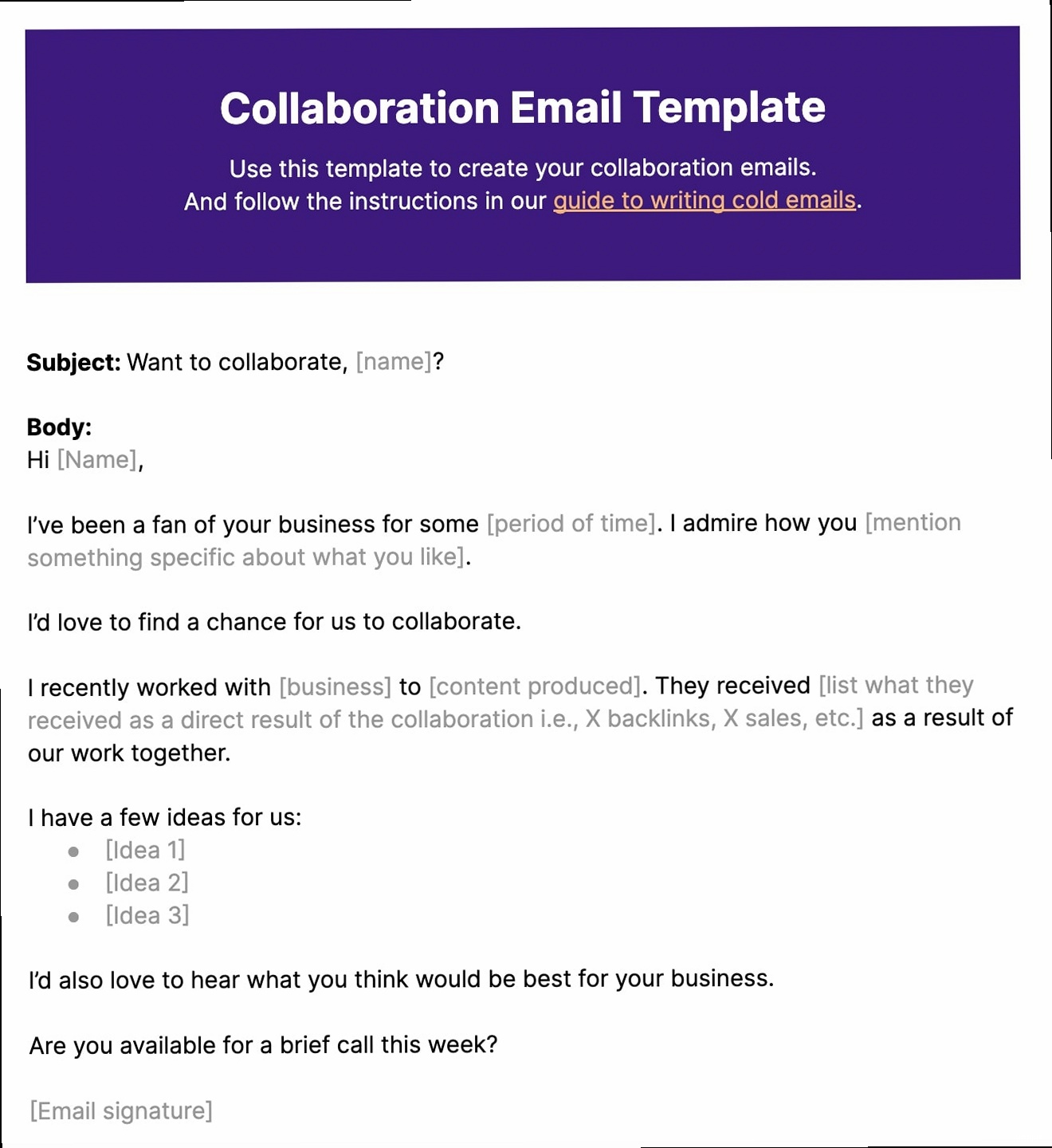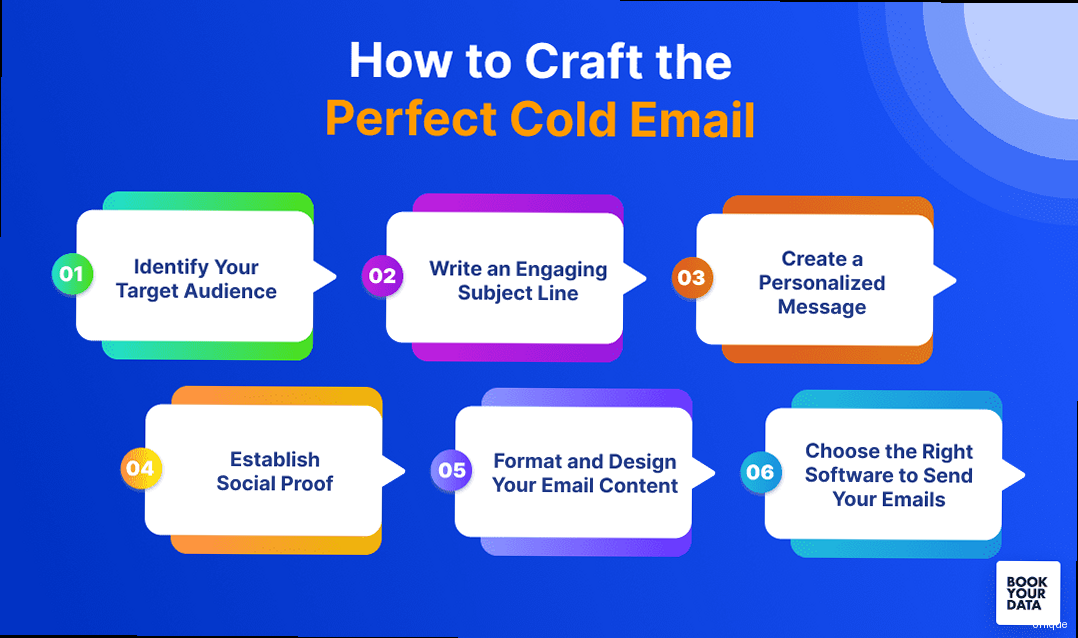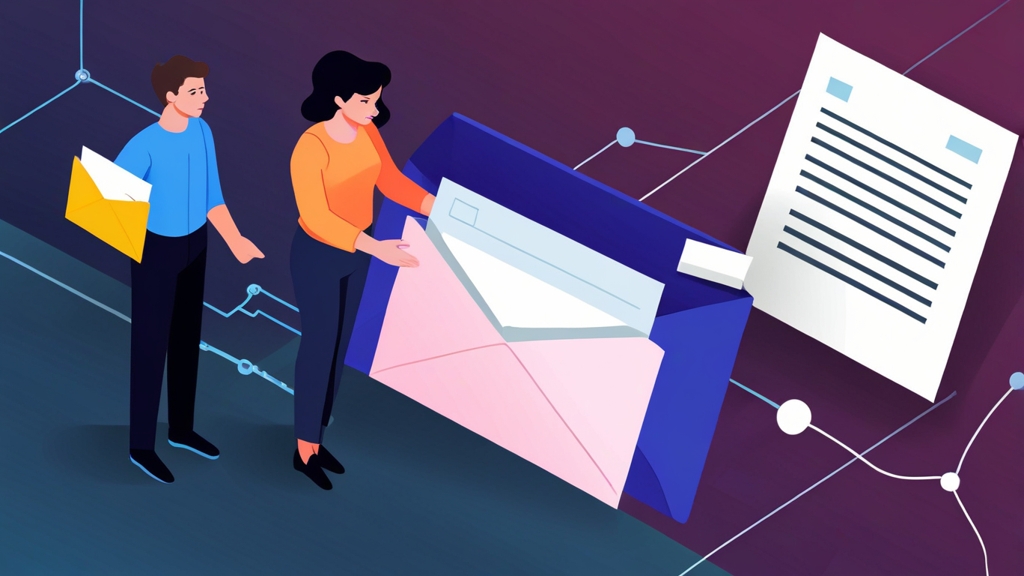Mastering Cold Email Personalization: Beyond the First Name
Crafting effective cold emails is a constant challenge. While generic templates are easy, they rarely convert. This article focuses on advanced personalization techniques that go beyond simply inserting a recipient’s first name, diving into specific strategies and practical examples to help you create truly engaging and effective cold email campaigns. We’ll cover research methods, personalization based on pain points, and dynamic content strategies.
Table of Contents
- Deep Dive Research: Finding the Personalization Gold
- Personalizing Around Pain Points: Demonstrating Understanding
- Dynamic Content Strategies: Tailoring the Message at Scale
- Measuring Personalization Effectiveness: Tracking and Iterating
Deep Dive Research: Finding the Personalization Gold

The foundation of effective cold email personalization is thorough research. Forget surface-level information – you need to dig deep to uncover details that allow you to connect with your recipient on a more meaningful level. This section will explore practical research methods and demonstrate how to extract valuable personalization data.
LinkedIn Profiling: Beyond the Job Title
LinkedIn is a treasure trove of information. Don’t just look at the job title and company. Scrutinize their profile for:
- Past Experience: Identify previous companies, roles, and responsibilities. Look for patterns or common threads in their career path.
- Skills and Endorsements: This reveals what they (and their peers) consider their key strengths.
- Activity: What articles do they share? What groups are they active in? What comments do they leave? This provides insight into their interests and concerns.
- Recommendations: Reading recommendations written *for* them can reveal how they are perceived by others and highlight their achievements.
Example: Let’s say you’re targeting a VP of Marketing at a SaaS company. Their LinkedIn profile shows they previously worked at a smaller, bootstrapped startup where they focused heavily on organic growth. You could personalize your email by saying:
“I noticed you spent several years building organic growth at [Previous Company]. Given the challenges of scaling a SaaS product, I was curious how you’re approaching [Specific Marketing Challenge] at [Current Company], especially considering the shift from a bootstrapped environment.”
This shows you’ve done your homework and are genuinely interested in their specific experience.
Company Website Analysis: Uncovering Strategic Priorities
A company’s website is a public declaration of its priorities. Examine it closely for clues about their current focus:
- Blog: What topics are they writing about? This reflects their content marketing strategy and areas of interest.
- Case Studies: These highlight successful projects and client relationships, revealing what they consider valuable outcomes.
- Newsroom/Press Releases: Stay updated on company announcements, product launches, and strategic partnerships.
- Careers Page: What roles are they hiring for? This indicates their growth areas and potential skill gaps.
- About Us Page: How do they position themselves in the market? What are their core values and mission?
Example: You notice a SaaS company recently launched a new integration with a popular CRM. You could personalize your email by saying:
“I saw that [Company Name] recently launched its integration with [CRM Name]. This is a smart move, especially for companies focused on [Specific Benefit of Integration]. We’ve helped similar companies like [Client Example] leverage integrations to [Achieve Specific Results]. I’d be happy to share how we can help [Company Name] maximize the value of this integration.”
This shows you’re aware of their recent activities and can offer relevant expertise.
Industry News and Articles: Staying Informed and Relevant
Staying up-to-date on industry news and trends allows you to personalize your emails with timely and relevant information. Use tools like Google Alerts, industry publications, and social media to monitor key topics and competitors.
Example: You read an article about a new cybersecurity threat affecting companies in the financial sector. You’re targeting a Chief Information Security Officer (CISO) at a bank. You could personalize your email by saying:
“I recently read about the [Cybersecurity Threat] and its potential impact on financial institutions like [Company Name]. Given the increasing sophistication of these attacks, I was wondering if you’ve considered [Specific Security Measure] to mitigate the risks. We’ve helped other banks like [Client Example] implement similar strategies to strengthen their security posture.”
This shows you’re aware of current industry challenges and can offer solutions.
Leveraging Data Enrichment Tools
While manual research is crucial, data enrichment tools can streamline the process by providing additional information about your prospects. Tools like Clearbit, ZoomInfo, and Hunter.io can enrich your existing contact data with details like company size, industry, technology stack, and social media profiles.
Example: Using Clearbit, you discover that a prospect’s company uses a specific marketing automation platform. You can tailor your email to address the limitations of that platform and highlight how your solution integrates seamlessly.
// Example hypothetical Clearbit API response
{
"company": {
"name": "Acme Corp",
"tech": ["Marketo", "Salesforce"]
},
"person": {
"name": "John Doe",
"title": "VP of Marketing"
}
}
With this data, you can write: “Knowing that Acme Corp uses Marketo for marketing automation, I understand the challenges of integrating it with complex sales processes. We’ve developed a solution that seamlessly bridges the gap between Marketo and Salesforce…”
By combining manual research with data enrichment tools, you can create a comprehensive profile of your prospect and personalize your emails with highly relevant information.
Personalizing Around Pain Points: Demonstrating Understanding

Identifying and addressing your prospect’s pain points is a powerful way to personalize your cold emails. Instead of focusing on your product’s features, demonstrate a deep understanding of their challenges and position your solution as a remedy. This section will explore how to uncover pain points and craft compelling email copy that resonates with your target audience.
Identifying Pain Points Through Research
Pain points aren’t always explicitly stated. You need to infer them based on your research:
- Review Sites: Read reviews of your prospect’s company and their competitors on sites like G2, Capterra, and TrustRadius. Look for common complaints and areas where they are falling short.
- Industry Forums and Communities: Monitor discussions on platforms like Reddit, Quora, and LinkedIn groups to identify common challenges and frustrations within the industry.
- Competitive Analysis: Analyze your prospect’s competitors’ websites and marketing materials. What problems are they trying to solve? Where are they vulnerable?
- Job Descriptions: If the company is hiring for a specific role, the job description can reveal skill gaps and areas where they need to improve.
Example: You find a recurring complaint in reviews about a SaaS product: poor customer support. You can use this pain point in your email:
“I’ve noticed some users have mentioned challenges with the current customer support experience at [Prospect’s Company]. We understand that exceptional support is critical for SaaS adoption and retention. Our clients, like [Client Example], have seen a [Quantifiable Result]% increase in customer satisfaction after implementing our support solutions.”
This addresses a specific pain point and positions your solution as a direct improvement.
Crafting Email Copy That Resonates
Once you’ve identified the pain point, craft your email copy to highlight the following:
- Acknowledge the Pain: Show that you understand their challenges and the impact they have on their business.
- Offer a Solution: Position your product or service as a direct solution to their pain point.
- Provide Social Proof: Share case studies or testimonials that demonstrate how you’ve helped other companies overcome similar challenges.
- Quantify the Benefits: Use data and metrics to illustrate the tangible results your solution can deliver.
Example: A marketing agency wants to target companies struggling with lead generation. They could send an email that says:
“Many marketing teams find themselves spending too much time on manual outreach and not enough time nurturing qualified leads. This often leads to wasted resources and missed opportunities. We specialize in helping companies like [Client Example] automate their lead generation process, resulting in a [Quantifiable Result]% increase in qualified leads and a [Quantifiable Result]% reduction in cost per lead.”
This email directly addresses the pain point of inefficient lead generation and offers a quantifiable solution.
Specificity is Key: Avoid Generic Claims
Don’t just say you can “improve efficiency” or “increase revenue.” Be specific about *how* you will achieve those results.
Bad Example: “We can help you grow your business.”
Good Example: “We can help you increase your organic traffic by 30% in the next quarter by implementing a targeted SEO strategy focused on [Specific Keywords] and [Specific Content Types].”
The more specific you are, the more credible and persuasive your email will be.
The “So What?” Test
Before sending any email, ask yourself “So what?” after each sentence. If the sentence doesn’t clearly benefit the recipient or address their pain point, it should be removed or rewritten.
Example:
Original Sentence: “Our platform is built on the latest AI technology.” (So what?)
Revised Sentence: “Our platform uses AI-powered automation to reduce your customer support response time by 50%, freeing up your team to focus on more complex issues.” (So what? Faster response times and more efficient use of resources.)
By focusing on pain points and crafting email copy that demonstrates a deep understanding of your prospect’s challenges, you can significantly increase your chances of getting a response.
Dynamic Content Strategies: Tailoring the Message at Scale
While deep personalization is ideal, it’s not always feasible at scale. Dynamic content allows you to tailor your message to different segments of your audience without manually creating individual emails. This section will explore practical dynamic content strategies and demonstrate how to implement them in your cold email campaigns.
Segmenting Your Audience
Dynamic content relies on segmentation. Divide your audience into groups based on shared characteristics, such as:
- Industry: Tailor your message to the specific challenges and opportunities within each industry.
- Company Size: Address the different needs of small businesses versus large enterprises.
- Job Title: Speak to the specific responsibilities and priorities of different roles.
- Technology Stack: Highlight integrations with the tools they already use.
- Geographic Location: Reference local events, regulations, or market conditions.
The more granular your segmentation, the more effective your dynamic content will be.
Implementing Dynamic Content in Your Emails
Most email marketing platforms (e.g., Mailchimp, HubSpot, Lemlist) offer dynamic content features. These features allow you to insert different text, images, or entire content blocks based on the recipient’s segment.
Example: Let’s say you’re targeting companies in the healthcare and finance industries. You can create a dynamic email template with different opening paragraphs:
// Hypothetical dynamic content code (syntax varies by platform)
{{ if industry == "Healthcare" }}
Given the increasing focus on patient data privacy and HIPAA compliance in the healthcare industry, we understand the challenges of securely managing sensitive information.
{{ else if industry == "Finance" }}
With the growing threat of cyberattacks and the stringent regulations of the financial sector, we know that protecting your financial data is paramount.
{{ else }}
We help businesses like yours improve their security posture and protect their valuable data.
{{ endif }}
This ensures that each recipient receives an opening paragraph that is relevant to their industry.
Dynamic Subject Lines
Subject lines are crucial for getting your emails opened. Use dynamic subject lines to personalize them based on your recipient’s:
- Company Name: “Increase Revenue at [Company Name]”
- Job Title: “Solutions for [Job Title] at [Company Name]”
- Industry: “Improve Efficiency in the [Industry] Industry”
Example: A subject line like “Streamline Your Marketing Automation at [Company Name]” is more likely to grab attention than a generic subject line like “Marketing Solutions.”
Dynamic Case Studies and Testimonials
Include case studies and testimonials that are relevant to the recipient’s industry or company size. If you have a case study of a similar company in the same industry, use dynamic content to insert it into the email.
Example:
// Hypothetical dynamic content code
{{ if industry == "Technology" }}
We helped [Technology Company] increase their customer retention rate by 20% with our [Specific Solution]. Read the case study
{{ else if industry == "Retail" }}
We helped [Retail Company] improve their online sales by 15% with our [Specific Solution]. Read the case study
{{ endif }}
This ensures that the recipient sees a case study that is relevant to their industry.
A/B Testing Dynamic Content
Don’t assume that your dynamic content is working effectively. A/B test different versions of your dynamic content to see what resonates best with your audience. Test different:
- Subject Lines: Compare different personalized subject lines to see which ones have the highest open rates.
- Opening Paragraphs: Test different opening paragraphs to see which ones generate the most engagement.
- Calls to Action: Experiment with different calls to action to see which ones drive the most conversions.
By continually testing and optimizing your dynamic content, you can ensure that you’re delivering the most effective message to each segment of your audience.
Measuring Personalization Effectiveness: Tracking and Iterating
Personalization efforts are wasted if you don’t track their impact and iterate based on the data. This section outlines key metrics for measuring the effectiveness of your personalization strategies and provides guidance on how to use those insights to improve your cold email campaigns.
Key Metrics to Track
Here are the most important metrics to monitor:
- Open Rate: Measures the percentage of recipients who opened your email. A higher open rate suggests that your subject line and sender name are compelling.
- Click-Through Rate (CTR): Measures the percentage of recipients who clicked on a link in your email. A higher CTR indicates that your email content is engaging and relevant.
- Reply Rate: Measures the percentage of recipients who replied to your email. A higher reply rate suggests that your email resonated with your target audience and prompted them to take action.
- Conversion Rate: Measures the percentage of recipients who completed a desired action, such as scheduling a demo or making a purchase. This is the ultimate measure of your campaign’s success.
- Bounce Rate: Measures the percentage of emails that could not be delivered. A high bounce rate can damage your sender reputation and negatively impact your deliverability.
Expert Tip: Track these metrics *separately* for personalized emails vs. non-personalized emails to directly assess the impact of your personalization efforts.
Setting Up Tracking
Most email marketing platforms provide built-in tracking features. Ensure you’re properly configured to track all the key metrics mentioned above. For more advanced tracking, consider using UTM parameters to track the source of your website traffic from your email campaigns.
Example: When linking to your website from your email, append UTM parameters to the URL:
https://www.example.com/?utm_source=cold_email&utm_medium=email&utm_campaign=personalization_testThis allows you to track the performance of your email campaign in Google Analytics.
Analyzing the Data
Once you’ve collected enough data, analyze the results to identify trends and areas for improvement:
- Compare Personalized vs. Non-Personalized Emails: Did personalized emails consistently outperform non-personalized emails across all key metrics?
- Identify High-Performing Personalization Tactics: Which personalization tactics (e.g., mentioning a specific blog post, referencing a LinkedIn update) generated the best results?
- Identify Underperforming Personalization Tactics: Which personalization tactics failed to resonate with your target audience?
- Segment Your Data: Did personalization strategies work better for certain industries, company sizes, or job titles?
Example: You notice that emails mentioning a specific industry event had a significantly higher reply rate than emails that didn’t. This suggests that referencing industry events is an effective personalization tactic for your target audience.
Iterating and Optimizing
Based on your analysis, iterate and optimize your personalization strategies:
- Focus on High-Performing Tactics: Double down on the personalization tactics that generated the best results.
- Eliminate Underperforming Tactics: Stop using the personalization tactics that failed to resonate with your target audience.
- Test New Personalization Strategies: Experiment with new personalization tactics to see if you can improve your results.
- Refine Your Segmentation: Adjust your segmentation criteria to ensure that you’re targeting the right people with the right message.
Example: You decide to focus on referencing industry events in your emails and test different variations of your event-related personalization: “I saw you attended [Event Name]” vs. “I saw you spoke at [Event Name]” vs. “I saw you were mentioned in an article about [Event Name].” Track the results to see which variation performs best.
By continuously tracking, analyzing, and iterating your personalization strategies, you can ensure that you’re maximizing the effectiveness of your cold email campaigns and achieving your desired results.
